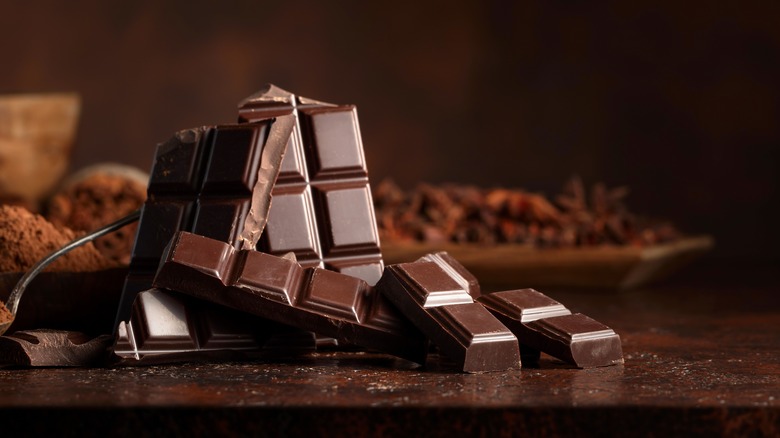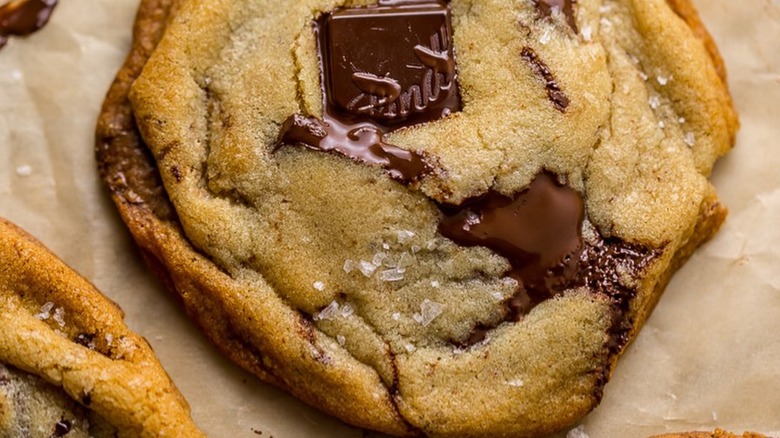Can You Substitute Chocolate Chips For Baking Chocolate?
When you're making a list of ingredients for a baking project, it can be tempting to ignore differences that may seem trivial on the surface — like choosing between chocolate chips and baking chocolate. Because while you may have investigated the best and worst chocolate chips on store shelves and even have a grasp of the difference between bittersweet and semisweet, when you're faced with these two options, you may still find yourself wondering, are they the same?
Not exactly. Chocolate chips come in an iconic shape, and they can stay that way in spite of lengthy journeys and temperature fluctuations in transit because commercial producers include stabilizers like soy or sunflower lecithin and less cocoa butter. These additives are critical for keeping your chips intact, while high-quality baking chocolate is free of this stuff or contains less of it.
You may be thinking this difference seems pretty subtle, which may make you wonder: Are chocolate chips and baking chocolate interchangeable? And the short answer is sort of — but with a caveat.
Choosing the right baking chocolate for the recipe
Perhaps the biggest distinction between chocolate chips and baking chocolate is related to melting. If you're attempting to liquify your chocolate (to enrobe cookies or truffles or drizzle over popcorn, for example), those stabilizers work to prevent chips from easily losing their shape. It is possible, but melting chips takes longer and is more likely to result in a thicker, gloopier, or even grainy or clumpy consistency. Baking chocolate, on the other hand, is designed to transform more smoothly and easily into a pourable melted product.
This difference is also evident in baked goods like cookies. Your chips mostly keep that teardrop shape, even after they've been baked, while chopped-up baker's chocolate melts in the oven, permeating your treats and leaving undefined pockets and pools instead.
While both of these options deliver that beloved chocolate flavor and can be swapped in a pinch, it's best to stick to their strengths. Use chips for cookies or to garnish your cakes — or in any application for which you want that little bit of textural contrast and familiar aesthetic. Opt for baking chocolate when you're going for smooth, shiny, silky melted chocolate or when you're making homemade chocolate bars and need easier spreadability. Either way, even if you're still learning everything you need to know about baking with chocolate, having an understanding of these differences can help your decision process.

